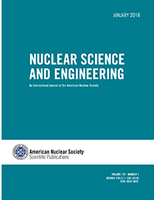
NUCLEAR SCIENCE AND ENGINEERING
Scope & Guideline
Advancing the Frontiers of Nuclear Innovation
Introduction
Aims and Scopes
- Nuclear Reactor Design and Analysis:
Focuses on the methodologies and technologies involved in the design, operation, and safety of nuclear reactors, including thermal-hydraulic analysis, fuel performance, and criticality safety. - Radiation Transport and Shielding:
Covers the study of radiation interactions and the development of shielding materials and strategies to protect against ionizing radiation in various applications. - Nuclear Fuel Cycle and Waste Management:
Explores the processes involved in the nuclear fuel cycle, including fuel fabrication, usage, reprocessing, and waste disposal, addressing sustainability and environmental concerns. - Advanced Reactor Concepts:
Investigates innovative reactor designs, such as molten salt reactors and microreactors, focusing on their unique operational characteristics and safety features. - Computational Methods in Nuclear Science:
Emphasizes the development and application of computational techniques, including Monte Carlo simulations and deterministic methods for neutron transport and reactor kinetics. - Nuclear Safety and Security:
Addresses the challenges and strategies related to the safety and security of nuclear facilities, including probabilistic risk assessment and regulatory compliance. - Neutron Physics and Fission Product Analysis:
Involves research on neutron interactions, fission processes, and the analysis of fission products, contributing to fundamental nuclear science and reactor operations.
Trending and Emerging
- Machine Learning and AI in Nuclear Engineering:
There is a growing trend in applying machine learning and artificial intelligence techniques to enhance nuclear reactor design, safety analysis, and operational efficiency. - Sustainability and Advanced Fuel Cycles:
Research focusing on sustainable practices in the nuclear fuel cycle, including the exploration of advanced fuels and recycling technologies, is increasingly prominent. - Microreactors and Small Modular Reactors (SMRs):
The development of microreactors and SMRs is gaining attention due to their potential for flexible deployment and reduced operational risks, aligning with modern energy needs. - Safety and Security Enhancements:
Increased focus on the integration of safety and security measures in nuclear facilities, particularly in response to evolving threats and regulatory requirements. - Multiphysics and Coupled Simulations:
An emerging trend is the use of multiphysics approaches that couple various physical phenomena, such as thermal-hydraulics and neutron transport, to provide comprehensive analyses of reactor behavior. - Advanced Materials for Nuclear Applications:
Research into new materials that can withstand extreme conditions in nuclear environments, including advanced cladding and fuel materials, is on the rise.
Declining or Waning
- Conventional Nuclear Reactor Technologies:
Research related to traditional pressurized water and boiling water reactors has seen a decrease as interest shifts toward advanced reactor designs and innovative technologies. - Basic Nuclear Physics:
While foundational studies in nuclear physics remain important, there has been a noted decline in purely theoretical explorations, with a greater emphasis on applied research and technology development. - Static Safety Analysis:
The focus on static safety analysis methodologies has waned, giving way to dynamic safety assessments that better account for real-world operational conditions and accident scenarios. - Legacy Fuel Cycles:
Interest in traditional uranium-based fuel cycles is decreasing as research pivots toward alternative fuels and advanced strategies for fuel sustainability, such as thorium utilization. - Low-Temperature Reactor Applications:
Investigations into low-temperature applications of nuclear technology are declining as the field moves towards high-temperature and more efficient reactor designs.
Similar Journals

ATW-INTERNATIONAL JOURNAL FOR NUCLEAR POWER
Empowering Innovation in Nuclear EnergyATW - International Journal for Nuclear Power is a premier journal dedicated to advancing the understanding and application of nuclear technology within the energy sector. Published by INFORUM Verlags-Verwaltungsgesellschaft mbH, this esteemed publication provides a platform for researchers, professionals, and students to disseminate cutting-edge research, practical applications, and critical analyses related to nuclear power generation. Although it has discontinued coverage in Scopus since 2012, its long-standing contributions to the field since 1996 underscore its significance and relevance. The journal aims to bridge the gap between theoretical insights and real-world applications, ensuring that stakeholders are well-informed on the latest trends, safety protocols, and innovations in nuclear power. With a commitment to fostering knowledge dissemination and collaboration, ATW continues to be an essential resource for anyone involved in the nuclear energy landscape.

THERMAL ENGINEERING
Pioneering Research in Energy and Power EngineeringTHERMAL ENGINEERING is a premier journal dedicated to advancing the field of thermal engineering, with particular importance in the domains of Energy Engineering, Nuclear Energy, and Power Technology. Published by PLEIADES PUBLISHING INC, this esteemed journal has been providing significant scholarly contributions since its inception, with its converged years spanning from 1970 to 2024. Though currently non-open access, the journal presents a unique avenue for researchers, professionals, and students to explore groundbreaking research and innovative solutions related to energy systems and thermal processes. With a notable impact factor and positioned in the Q3 quartile for both Energy Engineering and Nuclear Energy, THERMAL ENGINEERING ensures the dissemination of high-quality research with a global reach, making it an essential resource for those looking to stay at the forefront of essential energy technologies and engineering advancements.

NUCLEAR INSTRUMENTS & METHODS IN PHYSICS RESEARCH SECTION B-BEAM INTERACTIONS WITH MATERIALS AND ATOMS
Exploring the Frontiers of Beam InteractionsNUCLEAR INSTRUMENTS & METHODS IN PHYSICS RESEARCH SECTION B-BEAM INTERACTIONS WITH MATERIALS AND ATOMS, published by Elsevier, is a pivotal journal in the fields of nuclear and high energy physics as well as instrumentation. With an ISSN of 0168-583X and an E-ISSN of 1872-9584, this journal has been a significant contributor to the scientific community since its inception in 1983. Covering an extensive range of topics related to beam interactions with various materials and atoms, the journal serves as an essential resource for researchers, professionals, and students alike. It holds a respectable Q3 category ranking in both instrumentation and nuclear high energy physics as of 2023, indicating its relevance and quality within these domains. While the journal currently does not offer open access options, its invaluable findings are accessible through numerous academic libraries and institutions. With the publication's emphasis on fostering advancements in experimental techniques, instrumentation developments, and theoretical insights, it undoubtedly plays a crucial role in the ongoing progress and innovation in the field.

Radiation Detection Technology and Methods
Advancing the Frontiers of Radiation ScienceRadiation Detection Technology and Methods is a prominent academic journal published by Springer Singapore Pte Ltd, dedicated to advancing the field of nuclear and high-energy physics, as well as nuclear energy and engineering. Established in 2017, this journal provides a platform for the dissemination of pioneering research and innovative methodologies in radiation detection technology. As of 2023, it holds a commendable Q2 ranking in both the categories of Nuclear and High Energy Physics and Nuclear Energy and Engineering, underscoring its significance in fostering scholarly discourse within these vital fields. With ISSN 2509-9930 and E-ISSN 2509-9949, the journal aims to cater to a diverse audience of researchers, professionals, and students, emphasizing open access to knowledge. The journal's contributions are particularly crucial for those engaged in the development of safer and more efficient radiation detection techniques, ultimately bridging the gap between theory and practical applications in energy security and health physics. For researchers seeking a dedicated outlet for their work, Radiation Detection Technology and Methods represents an invaluable resource and an opportunity to influence the future of radiation science.

EUROPEAN PHYSICAL JOURNAL A
Championing Open Access for Cutting-edge ResearchEUROPEAN PHYSICAL JOURNAL A (EPJ A), published by Springer, is a premier journal in the field of Nuclear and High Energy Physics, dedicated to fostering innovative research and scholarly communication within the scientific community. With an impressive impact factor that reflects its significant contribution to the discipline, EPJ A ranks in the Q1 category and boasts a Scopus rank of 24 out of 87, placing it in the 72nd percentile of its field for 2023. This journal, with its ISSN 1434-6001 and E-ISSN 1434-601X, embraces a commitment to open access, ensuring that cutting-edge research is accessible to a global audience. With coverage from 1998 to 2024, EPJ A continues to be a vital resource for researchers, professionals, and students alike, promoting collaboration, knowledge sharing, and advancements in the vast landscape of nuclear physics and high-energy interactions. Located in Germany with a representative address in New York City, this journal serves as a bridge for international scientific discourse.
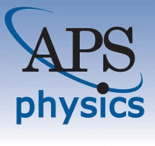
PHYSICAL REVIEW C
Pioneering Research in High-Energy DynamicsPHYSICAL REVIEW C is an esteemed journal published by the American Physical Society, dedicated to advancing knowledge in the fields of nuclear and high-energy physics. With a proud ISSN of 2469-9985 and an E-ISSN of 2469-9993, it has established itself as a leading journal, currently ranked in the Q1 category for its field in 2023, positioning itself in the top tier of scholarly publications. Based in the heart of the United States, at One Physics Ellipse, College Park, MD, PHYSICAL REVIEW C is known for its rigorous peer-review process and is a vital platform for researchers to share their pioneering findings. As part of a prestigious lineup backed by an impressive impact factor, this journal garners significant attention, reflected in its Scopus ranking as #18 out of 87 in the Nuclear and High Energy Physics category, placing it within the 79th percentile. While it currently does not offer open access options, it remains an essential resource for professionals and students seeking to deepen their understanding of nuclear interactions, reaction dynamics, and the fundamental principles governing subatomic particles. The convergence of innovative research from 2016 to 2024 makes it a timely reservoir for groundbreaking studies, thus reinforcing its importance in the scientific community.

Problems of Atomic Science and Technology
Bridging Theory and Application in Nuclear Physics.Problems of Atomic Science and Technology is a leading journal in the realm of nuclear physics and technology, published by the esteemed Kharkov Institute of Physics and Technology. With an ISSN of 1562-6016, this journal is dedicated to disseminating high-quality research and advancements in atomic sciences, contributing significantly to both academic and practical applications in the field. Although not an open access publication, it ensures rigorous peer review standards to maintain the integrity and relevance of cited works. The journal seeks to provide a vital platform for researchers, professionals, and students who are engaged in the exploration of atomic phenomena, nuclear engineering, and associated technologies. Published from Kharkov, Ukraine, the journal also serves as a bridge for international collaboration and innovation, making it indispensable for anyone looking to stay at the forefront of atomic science research.
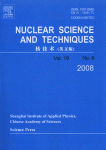
Nuclear Science and Techniques
Driving Progress in Nuclear Science and EngineeringNuclear Science and Techniques is a distinguished peer-reviewed journal published by Springer Singapore Pte Ltd, dedicated to advancing the fields of nuclear science and engineering. With an impressive impact factor reflected in its 2023 quartile rankings—Q2 in Nuclear and High Energy Physics and Q1 in Nuclear Energy and Engineering—the journal serves as a vital resource for researchers, professionals, and students alike. Covering a breadth of topics from nuclear physics to energy applications, it offers a platform for innovative research and developments in the nuclear domain. The journal, indexed under ISSN 1001-8042 and E-ISSN 2210-3147, aims to foster scientific exchange and collaboration within the community by publishing high-quality articles that contribute significantly to the field. Committed to maintaining an open-access ethos, it enhances visibility and accessibility of critical knowledge, making it an essential source for current insights and trends in nuclear science.
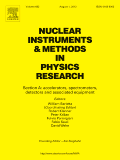
NUCLEAR INSTRUMENTS & METHODS IN PHYSICS RESEARCH SECTION A-ACCELERATORS SPECTROMETERS DETECTORS AND ASSOCIATED EQUIPMENT
Elevating experimental techniques in nuclear and high energy physics.NUCLEAR INSTRUMENTS & METHODS IN PHYSICS RESEARCH SECTION A is a leading journal published by Elsevier, dedicated to the advancements in accelerators, spectrometers, detectors, and associated equipment relevant to the fields of nuclear and high energy physics. With its ISSN 0168-9002 and E-ISSN 1872-9576, this journal fosters knowledge sharing among physicists and researchers globally, providing a critical platform for both theoretical and experimental studies. Currently ranked in the Q2 quartile for both Instrumentation and Nuclear and High Energy Physics, the journal maintains a robust position in the competitive Scopus rankings, with noteworthy placements that underline its scholarly impact. As of 2023, it occupies the 38th rank in Nuclear and High Energy Physics and the 79th in Instrumentation, illustrating its relevance in the scientific community. Covering research spanning from its inception in 1983 to the projected completion in 2024, the journal caters to a diverse audience of researchers, professionals, and students eager to stay abreast of the latest innovations and techniques in the realm of nuclear instrumentation. Although it primarily operates under subscription-based access, it is instrumental in disseminating pivotal findings and experimental methodologies that drive progress in the scientific community.
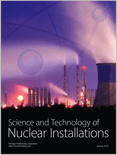
Science and Technology of Nuclear Installations
Unveiling Breakthroughs in Nuclear EngineeringScience and Technology of Nuclear Installations, published by HINDAWI LTD, is an esteemed scholarly journal specializing in the dynamic field of nuclear energy and engineering, with an ISSN of 1687-6075 and an E-ISSN of 1687-6083. Since transitioning to an Open Access model in 2007, the journal has significantly contributed to the dissemination of innovative research and practical applications in nuclear technology, attracting a global audience from both academia and industry. Based in Egypt, this prominent journal serves as a vital platform for researchers seeking to explore advanced methodologies, cutting-edge technologies, and the sustainable development of nuclear installations. Achieving a commendable Q2 category ranking in Nuclear Energy and Engineering and positioning at #35/77 in Scopus rankings (55th percentile) underscores its influential presence within the scientific community. With a publication horizon extending from 2008 to 2024, the journal remains committed to fostering collaboration and innovation in nuclear science, making it an invaluable resource for researchers, professionals, and students alike.